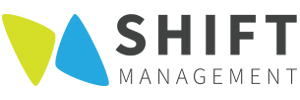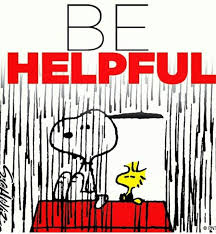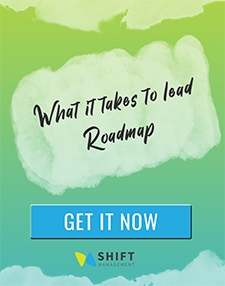
Make no mistake…
You can show you have all the technical skill in the world, but if the interviewer doesn’t leave that meeting feeling they know you, like you, and can trust you, there’s a good chance you’ll miss your opportunity.
In part one of this series “How to make yourself irresistible in a job interview,” you learned the 3 crucial ways to prepare for your next interview and were introduced to KLT – or the “Know, Like, and Trust” factor.
As you read in the title, part two will take you through 4 strategies you can use to increase KLT during your interview – this is where we stop practicing those 3 crucial ways to prepare for your next interview and start showcasing our abilities. Next week you’ll get 4 more.

Strategy #1: Be interested
Here’s a basic truth about humanity: most people are more interested in themselves than they are in anyone else on the entire planet. And it’s not because people are inherently selfish…it’s actually a key survival skill.
Each of us is hard wired for self-preservation. From the way our brain functions to our ability to manage inside complex group dynamics, our default, automatic response will always be in what we think is our own best interest – whether right or wrong.
So, when you show that you are sincerely interested in understanding what someone else is trying to do, or trying to become, you tap into a part of their brain that starts to identify you as a helper. In other words, when you do the work to understand what someone else needs from you to help them reach their goals, their brain starts doing the work to fit you into their plans. And that process begins automatically, without them even knowing about it.
Here is a quick dialogue to show this strategy in action. To set the stage, imagine you’ve just been invited into the interview room. Two people are seated on the far side of the table and they stand as you walk toward them, ready to shake hands.
YOU: Hello, my name is Pat. How is your day going?
INTERVIEWER 1: Thanks for coming in today Pat. My day is going well.
INTERVIEWER 2: Good to meet you Pat. How are you?
YOU: I’m doing well. I imagine you’ve had a few interviews before mine. What part of this process do you enjoy?
INTERVIEWER 1: I actually really like meeting so many people.
INTERVIEWER 2: I’m always surprised at how many different answers we get from the same set of questions. Some of them are really creative.
YOU: Well, I’ll do my best to come up with some good ideas you can add to your list!
By asking the interviewers what they like about giving job interviews, you prime their brain to look for more things they like about your job interview. And, by stating you’ll try to provide one of those “likeable” experiences for them, you help them notice all the parts of your interview that meet their needs.

Strategy #2: Ask for a favour
Here’s another truth about people: they like to be in a position to help. Think of a toddler who may not have many kitchen skills, but when they are asked to fill a measuring cup with flour and add it to the batter, they swell with pride.
As we age and more people make demands of us, we may feel suspicious or resentful when approached for assistance UNLESS the help we are asked for is simple and will take little effort on our part.
So, when asking your interviewers for a favour, keep it small and simple. Here are some examples to use. Pick one that feels right to you:
-
“Could you do me a favour? Is there a place where I can get a glass of water?”
-
“Could you help me? I’m not sure which is the best building exit to use to get to (street name).”
-
“Maybe you have an idea on this…I need to grab a quick bite to eat. Where do you like to go that’s close?”
-
“I’ve caught a bit of a cold I’m afraid. Do you, by chance, have a tissue?”
-
“Could I have your card?”
Strategy #3: Talk about what interests the other person
A close-cousin to Strategy #1: Be interested, striking up a conversation about what interests someone else is a sure way to help them like you more. People want to connect and spend time with people who are similar to themselves. We find safety in commonalities.
So, if you notice that your interviewer has a photo of their children on their desk, ask them about their photo. Where was it taken? How old are their children now? If you have been to a place that’s similar, say so. If you have children of your own (or nieces and nephews, or kids you know from the neighbourhood), say something that will like your experience to the interviewer’s.
Overall, choose to get curious about what seems to be important to the other person and focus your conversation on that. Learn all you can about their perspective and see what parts of your experiences mirror theirs and which don’t. Share those stories in agreeable ways, and people will start to feel that you understand where they are coming from.

Strategy #4: Be empathic
Lately it’s been difficult to find an article on effective communication that doesn’t highlight this buzzword: empathy. There’s a good reason for that…
There are many definitions of empathy but I like this one best. It’s a quotation from Atticus Finch, the hero in Harper Lee’s To Kill a Mockingbird:
“You never really understand a person until you consider things from his point of view, until you climb inside of his skin and walk around in it.”
Empathy means to “feel with” another person, and it requires a willingness on our part to access the experiences and emotions from our history that most closely mirror what is being communicated to us.
That takes both vulnerability and courage.
Now, to be clear, most interviewers are not going to open up to you about their emotional state, but you might be able to probe into what state their organization is in. In most interviews you will have an opportunity to ask questions and a great one to consider is:
What is the most important challenge your organization is facing right now?
or
What do you think will be your organization’s biggest challenge 1 year from now?
As they answer, pay close attention to the emotion they convey as they share their ideas. Feel free to probe a bit deeper if the answer they provide seems a bit shallow.
Once they have finished, now is your opportunity to showcase your empathy. Here’s the basic formula:
“So your organization is [insert an emotion word that describes the feeling conveyed by the interviewer] because [paraphrase the facts about what the other person has shared].”
In practice this formula could sound like:
-
“So your organization is confused because the simple problems you face repeat themselves over and over again and you need that to change.”
-
“So what you’re looking for is a confident plan to help your company handle the challenge of…”
-
“It sounds like you’re frustrated because it’s been so difficult to find a person who will [motivate your team effectively, flex with role expectations, handle the hard conversations, etc.].”
The strength of this approach in a job interview is that once you’ve identified how the organization is “feeling” and what they’re experiencing, you are in a position to show how you can help.

Practice makes perfect
It is essential that your interviewers feel that they know, like, and trust you before that job interview ends, no doubt. It is equally important that you use your KLT skills in other interactions too so that when it comes time to ask for a favour or show empathy, you can do it in a way that builds rapport. Here again are the 4 strategies you can start practicing today to help your interviewers know, like, and trust you:
-
Be interested
-
Ask for a favour
-
Talk about what interests the other person
-
Be empathic
Remember: every conversation is a chance for you to get better at this. Be mindful and practice, practice, practice.
“The way we communicate with others and with ourselves ultimately determines the quality of our lives.”
Tony Robbins

Looking for more ways to build your career? Check out some FREE online video training on Ask Marie. Here are 3 posts we think you’ll like:
About Marie:
Marie Gervais, PhD, CEO Shift Management is a business-to-business entrepreneur who specializes in helping employers train their middle management to lead, get their workplace learning online and interactive, and conduct team assessments to figure out who to promote and how. She has a background in integrating internationally-trained individuals to the workplace and has supported many businesses in their efforts to hire, retain, support and promote immigrant and diverse employees.
Get in touch – she would love to hear from you: marie@shiftworkplace.com or 780-454-5661







